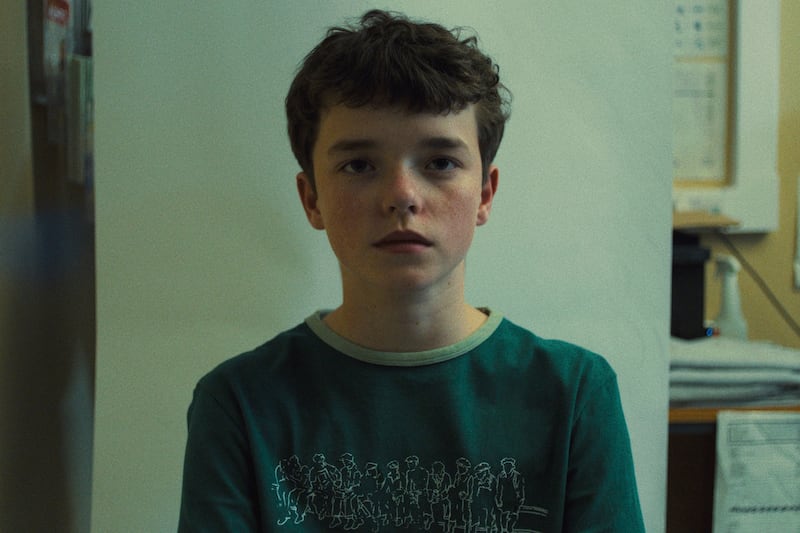Trabzon is not on the tourist trail. Well, it isn’t for those of us from northern Europe, the United States or most places west of Turkey itself. Apparently, it is popular with visitors from the Middle East, mostly because it’s the nearest place with the novelty of regular rain.
Trabzon sits on Turkey’s northern coast, abutting the Black Sea — a body of water so low in salt that you could almost drink it, were it not for the appalling pollution. Trabzon’s been here a while — the city was originally founded by the Greeks, about 3,000 or so years ago but its origins date from 7000 BC. It sits amid a thin strip of wet, green lushness separated from the drier interior of Turkey by the Pontic mountain range. Those mountains trap the cold, wet air coming in off the sea, triggering some biblical rain and making the area around Trabzon the place in Turkey to grow things. Ever had PG Tips tea or Nutella? Then you’ve drunk tea and eaten hazelnuts from here.
While we weren’t interested in nuts, our plans were a little nutty. We were going to drive from Trabzon, over those lofty Pontics, down to and across the mighty Euphrates river and on deep into the interior of Turkey, eventually reaching the city of Urgup, literally built into the rocky hillsides of Cappadocia.
To get there, we’d have to climb 2,500m up a treacherous, single-lane, gravel-strewn mountain pass and burrow under another mountain along a road perched perilously high above the Euphrates itself.
So what would we be driving? Not, as you might imagine, a Land Rover Defender or Jeep Wrangler. Our transport would not have winches, knobbly off-road tyres, or even suspension raised especially high. No, our cars for this journey would be Mazda’s new CX-60 plug-in hybrid SUV, and its older (albeit continuously updated) and slightly smaller CX-5. These are cars you’d normally expect to see on the school run, not scrambling up a goat track.
We were at least on tarmac as we left Trabzon, hauling along a four-lane corniche that hugs the Black Sea coast, and which was pretty much as wet as that sea thanks to the cloudburst that just kept bursting above us. No wonder the hillsides are so green here: it’s as wet as Galway, and there’s a touch of Irish planning permission about the way there’s urban sprawl all the way along the road.
Turning inland, we soon dry off and rise up. At first, we’re on pretty good tarmac, sweeping up into mountains that suddenly start to look rocky and lofty, like Switzerland on steroids. Then, almost without warning, we hit dirt and the road narrows to a single path. There’s just about enough width for an oncoming vehicle to squeeze past, as long as that vehicle isn’t a bus, truck, or tractor but whoever’s passing on the outside will have to swallow their vertigo long enough to deal with the sight of the almost-sheer drop to the valley floor.
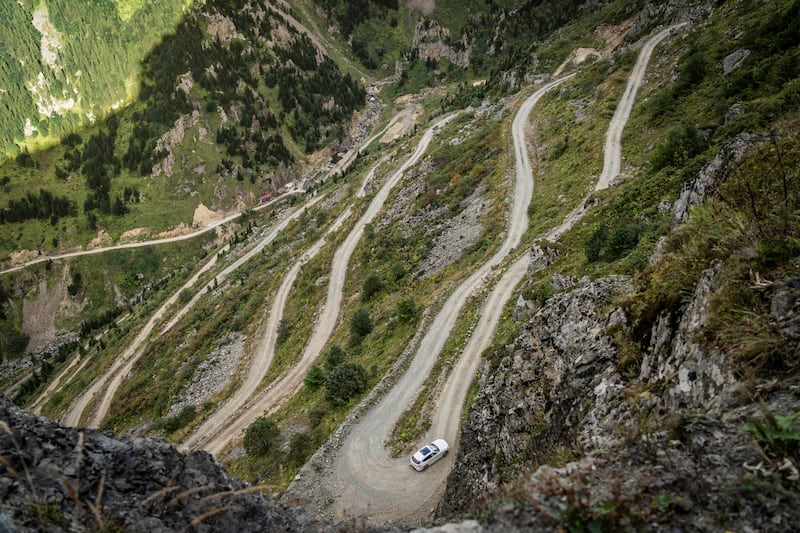
This is the start of an infamous stretch of road, known as the Derebasi Turns. Winding up the side of Mount Soganli, the road was scraped and chiselled out of the mountainside in 1916 by a labour force being shoved and poked in the back by the bayonets of an invading Russian army. The surface is a mix of gravel and dirt, and thankfully today it’s dry. The rain we earlier escaped hasn’t pushed its way up this high so after taking a strong, sweet Turkish tea from a tiny hut suspended over the gorge, we press on.
The CX-60 performs surprisingly well here. This is a road which frequently has a 17 per cent gradient, and which at one point climbs 300m in just 5km of driving. It looks like some form of digitised madness designed for a new version of the Forza Horizon video game, but it’s really real. In theory, and at least according to the publicity that draws intrepid drivers and motorcycle riders here every year, it’s one of the most dangerous roads in the world — what with its 29 hairpins, no guardrail and plenty of evidence of rockfalls that’s hardly surprising — but for us, it proved a bit of a pussycat. It’s not a road to take liberties with, and you have to go slow. Occasionally, the CX-60 will struggle slightly for traction, or will lumpily thump its springs over some particularly nasty rocks, but in general it’s pretty smooth going and we reach the peak — where the landscape flattens out and starts to look like the rolling bits of the Scottish highlands. The tarmac starts again here, so we can start to explore a bit more of the CX-60′s abilities.
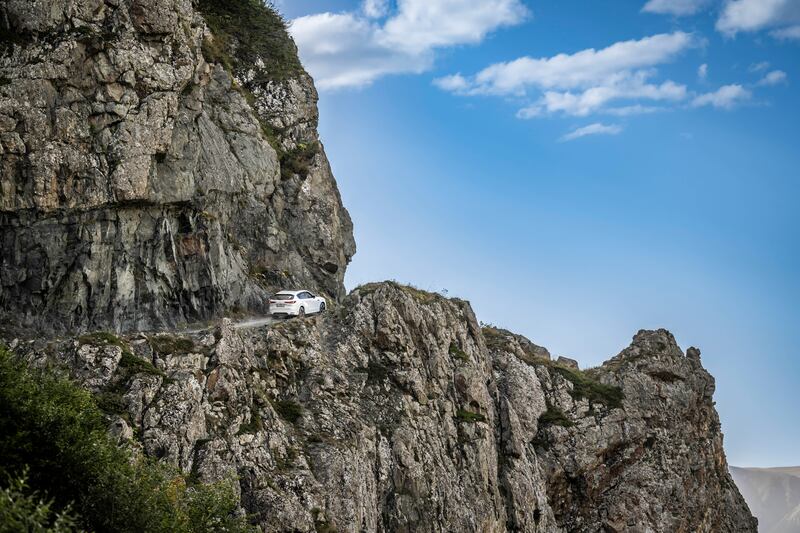
As we crest the mountains and start to drop down towards the drier, dustier interior of Turkey, the CX-60 is not feeling entirely happy. The lumpy responses we found on the rocky bits of road continue on these much smoother surfaces, and while it has sharp steering for a chunky SUV, it’s a car that seems to struggle with its weight. It has a big 17kWh battery on board, which can take it for a claimed 63km on electric power, but up here in the mountains there’s nowhere to plug it in. Indeed, there’s really nowhere in Turkey at all to plug in, as it’s a country — one of many — that simply hasn’t taken very many steps on the road to electric motoring just yet. Which means that the battery is basically dead weight, and it’s affecting both fuel economy and the way the CX-60 rides and tackles corners.
As we drop down, heading for an overnight stop in the dusty desert town of Elazig, the CX-60′s other attributes do at least shine through. It has a gorgeous, and very high-quality interior and its a very refined car, but it lacks the usual Mazda strengths of driver enjoyment and a supple chassis. Maybe it’ll feel better to drive at home.
To get to our home for the night, we have to cross the Euphrates river by ferry. Sure, we could have crossed on a motorway bridge further along, but where would be the romance in that? As the sun, now heating the place up to around 30 degrees, starts to set we slip our moorings and chug gently across a river which seems today to be flat-calm. Alexander The Great had to cross this river too, but he did it with horses, not a plug-in hybrid Mazda. Still, it seems like one of those moments in life that you need to save memory space for.
The next morning, we’re off again and headed for a different stretch of the Euphrates, but this time in a diesel-engined Mazda CX-5. Diesel might have fallen out of fashion here, but straight away we’re scoring much better fuel economy figures than we did in the CX-60, and the CX-5 feels far lighter and more engaging to drive than its newer, bigger brother. Progress isn’t always progress.
Progress was definitely in the minds of the people who created our next challenge, though. The Stone Road of Kemaliye was built amid the tall and forbidding Munzur mountains by local people looking to connect their part of Turkey with Anatolia and the rest of the country. Construction started in 1870, and the road winds along above the Euphrates for 8.7km. Despite its relatively brief length, it took some time to complete. The first section of tunnels was dug with nothing more than picks and shovels, and the going was slow. So slow that it would actually take 132 years to build — the Stone Road only opened in 2002.
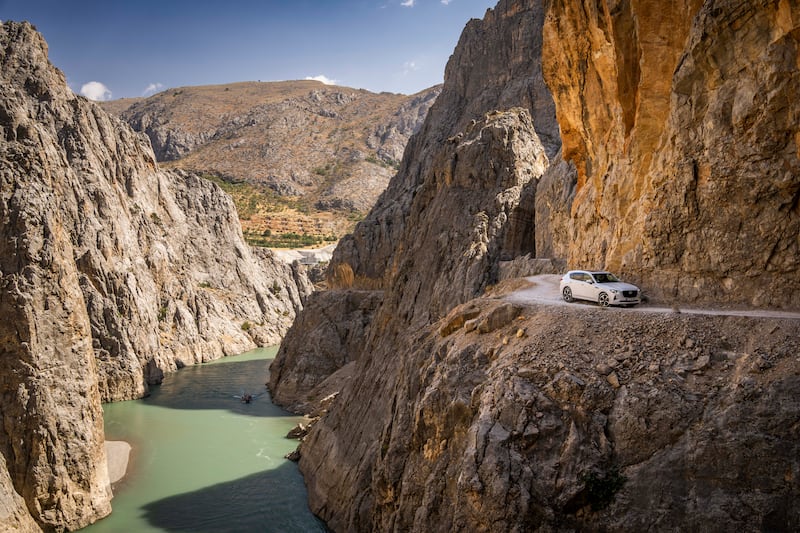
Well, I say opened but it’s actually pretty closed-off. You access the road through a tiny tunnel opening that looks no bigger than a large door and then you find yourself driving through what seems to be a Minecraft challenge; a series of catacombs that occasionally opens out into the gorge of the river itself, hemmed in by rock walls so tall that in some places it’s said that the sun genuinely never shines. We didn’t see anything that someone might have shoved there in frustration, though.
Mind you, it was a little tricky to see at all at times. Quite apart from constantly adjusting to the contrast of bright desert skies competing with stygian darkness, there was also a constant pall of chalk-white dust swirling in the air, a spooky, druidic spell broken only by an open top Land Rover coming the other way, blasting Turkish pop music into the tunnels as it gave the residents of a hen party the ride of their lives.
Thankfully, further along, at one of the open sections, we had an opportunity to switch off the engine and just sit quietly above one of the most famed rivers of ancient history. We were utterly alone, and the silence was enveloping, like no quiet you’d ever find on this crowded island. It was wonderful.
Onward we pressed. The area around the Stone Road looks like a bigger, taller version of Spain in places, but as we headed for our final destination at Cappadocia the landscape changed again, this time to a very decent impression of the American west. We even spotted a few twisting, flying dust-devil mini-tornadoes at the side of the road as we drove.
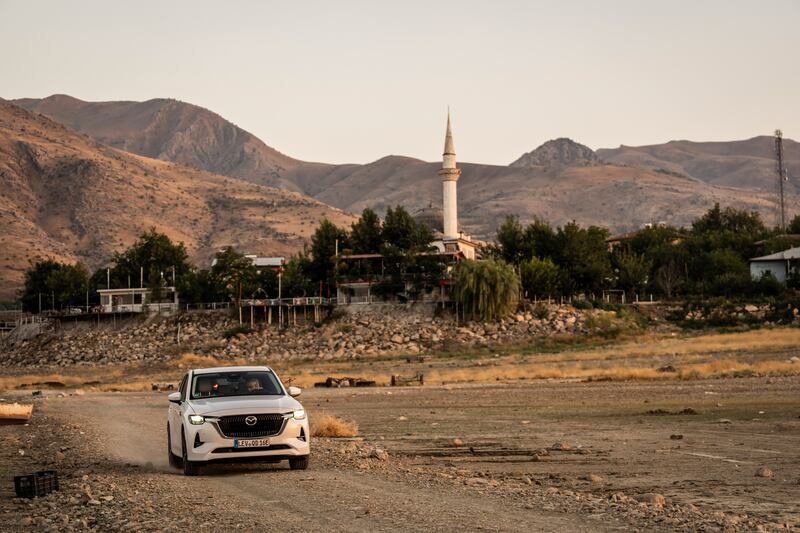
By now, the Mazda was back on more familiar turf even if we weren’t. The Stone Road may have taken five generations to build, but the rest of Turkey is well-served with relatively smooth, mostly empty main roads. Just watch for the way in which locals interpret traffic regulations in, shall we say, an entertaining fashion. Turkey is a place where the best traffic law may well be “he who hesitates is lost”.
Our last stop, Cappadocia, is physically stunning — and therefore unsurprisingly more touristy, but you can maybe forgive that. The ground here was once covered in a huge swathe of volcanic ash, which hardened into a flaky stone called tuff, and which has since weathered and eroded away into wild pointy shapes that are either spear-like or just plain priapic, depending on your tolerance for Kenneth Williams-style humour. The town of Urgup is literally built into a hillside, with some buildings still partially made up of caves dug into the rock. That was a fashion started by Bronze Age settlers, and picked up again by an early Christian population here, seeking shelter from attacks by marauding Arabic armies. Sunset here is a riot of reds and pinks, not in the skies but reflected off the rocks and the hills. It’s one of the most spectacular things I’ve ever seen.
You could fly here, of course. Neveshir airport is only a 30-minute drive and is itself about an hour’s flight from Istanbul. But driving here is a far, far better idea.
Turkey has a big population — 84 million, but that’s about the same as Germany. And Germany is half Turkey’s physical size. Besides, 15 million of those people are crammed into Istanbul, leaving an awful lot of space for the other 69 million. There are huge swathes of wall-to-wall feck-all in Turkey, and many of them are deeply beautiful (net of concerns over appalling economic inequality, a dubious current political caste, and issues with the recognition of LGBTQ rights). Fly over them? Nope — driving over them, and under them, is way more fun.


